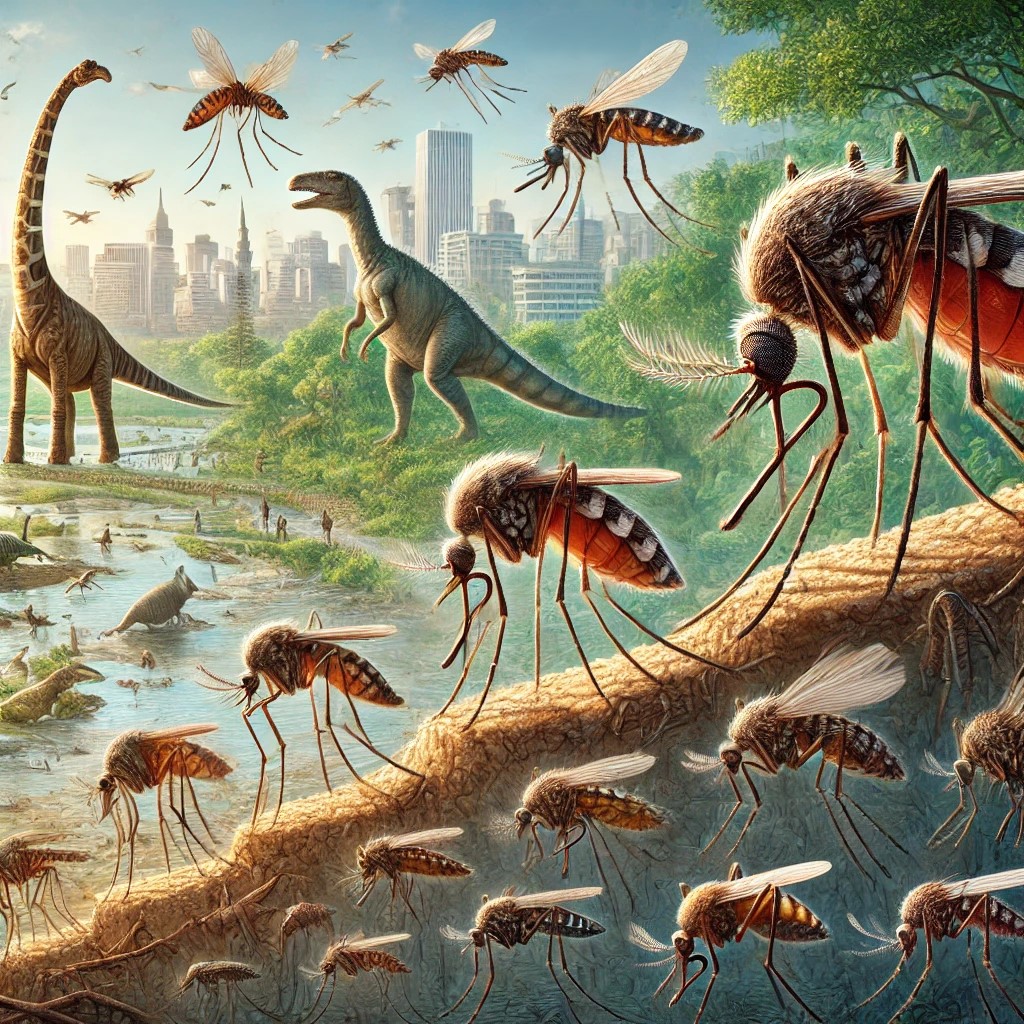
Mosquitoes are among the oldest and most persistent pests in the world. With an evolutionary history spanning over 200 million years, these insects have adapted and diversified across various environments, becoming vectors of diseases that affect both humans and animals.
Origin and Antiquity
The history of mosquitoes dates back to the early Triassic period, around 217 million years ago.
- This period marks an origin earlier than that of dinosaurs and mammals.
- The oldest mosquito fossils date back to the Cretaceous period, approximately 130 million years ago, when the first lineages developed specific traits such as blood-feeding.
Evolution and Adaptation
Throughout their evolution, mosquitoes have undergone significant changes that have allowed them to thrive:
Hematophagy:
- The ability to feed on blood evolved around 200 million years ago.
- Initially, both males and females had mouthparts adapted for piercing and blood-feeding.
Reduction in Size:
- Ancient mosquitoes were up to three times larger than modern ones, but evolution favored smaller sizes, better suited to diverse habitats.
Biological Diversification:
- There are over 3,500 species of mosquitoes today, globally distributed and adapted to specific habitats.
- The separation of Gondwana and other geological events influenced the distribution of lineages, particularly the Anopheles subgenera.
Dietary Adaptations
The feeding habits of mosquitoes have changed dramatically during their evolution:
- In the Triassic, they likely fed on amphibians.
- During the Jurassic, they adapted to feed on reptiles and birds.
- The transition to feeding on mammals occurred after the Cretaceous-Paleogene extinction, coinciding with the diversification of these animals.
Impact on Ecology and Public Health
From an ecological and medical perspective, mosquitoes play a dual role:
Ecological Impact:
- Serve as a food source for many species in food chains.
- Their larvae contribute to nutrient recycling in aquatic ecosystems.
Medical Impact:
- Mosquitoes are vectors of diseases such as malaria, dengue, yellow fever, and Zika.
- Their ability to transmit pathogens is linked to the specialization of their salivary glands, which facilitate the transfer of viruses and parasites to their hosts.
Survival Strategies
The resilience and adaptability of mosquitoes have been key to their evolutionary success:
Environmental Resilience:
- They can survive extreme conditions thanks to their aquatic and terrestrial life cycles.
Natural Defenses:
- Produce melanin in response to infections, which protects them against certain pathogens.
Reproductive Strategies:
- Their adaptability enables them to colonize new habitats, from temporary puddles to urban areas.
New Control Strategies
Today, mosquito control combines modern technologies with biological strategies:
Wolbachia:
- A symbiotic bacterium that reduces the transmission of pathogens in mosquitoes.
Transgenic Mosquitoes:
- Genetically modified mosquitoes designed to reduce populations through sterilization or disruption of reproductive cycles.
Larvicide Rotation:
- Using different substances to prevent mosquitoes from developing resistance to insecticides.
The evolutionary history of mosquitoes is a fascinating blend of adaptation and survival. Understanding their origin and development not only enhances our appreciation of their complexity but also provides tools for effective control.
Are mosquitoes causing problems in your home or business?
At Eco Fauna Control, we offer effective and personalized solutions to protect your environment. Contact us for more information.
